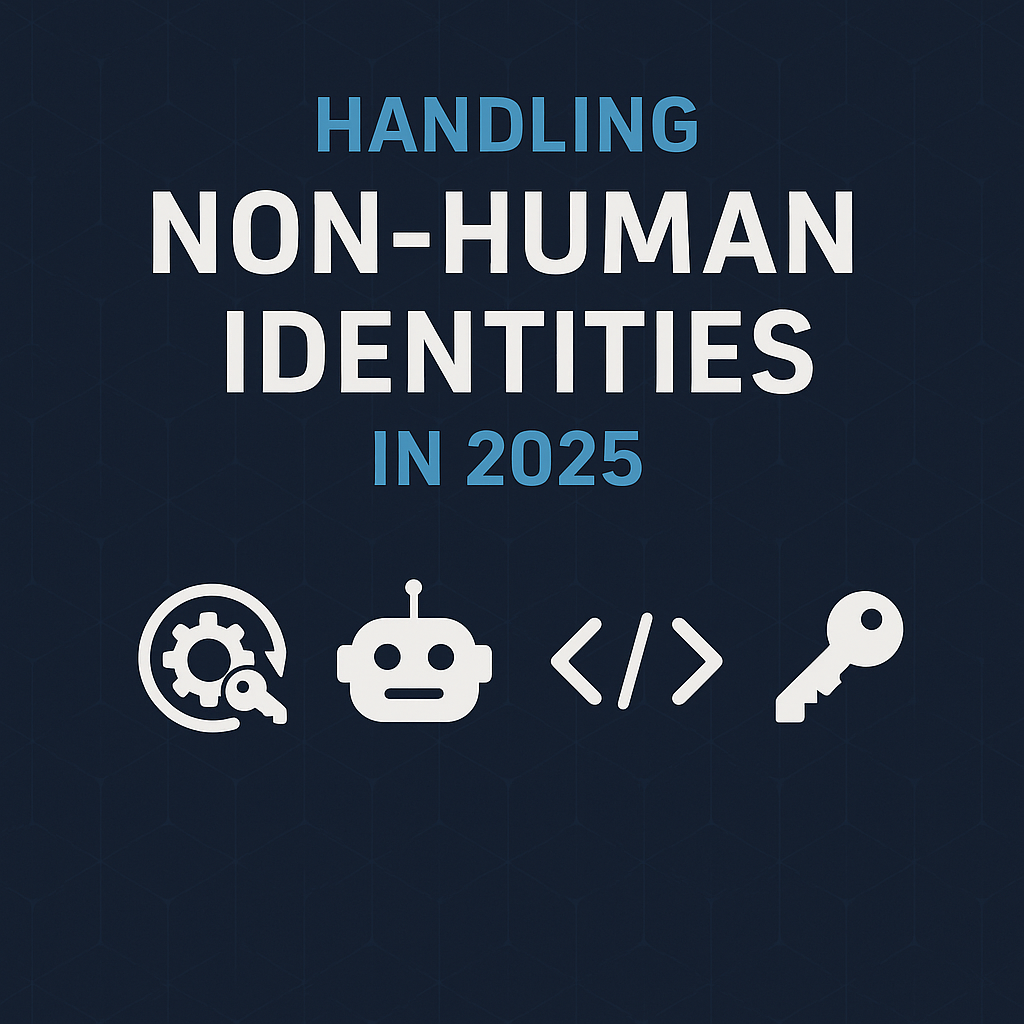
TL;DR
In 2025, non-human identities (NHIs)—like bots, service accounts, and automation agents—are no longer passive infrastructure components. They can now request access, trigger workflows, and even be AI-augmented. That makes them riskier than ever. This post breaks down how to spot bad practices, apply controls, and align your IAM strategy to handle NHIs like first-class identities.
🧠 Background: What Are Enhanced NHIs?
Traditionally, non-human identities were limited to API keys or service accounts performing narrow tasks. In today’s IAM landscape, Enhanced NHIs include:
- AI bots requesting temporary access via APIs
- GitHub actions that deploy infrastructure
- Automation tools integrating with SSO and workflow engines
These identities now have privileged access, lifecycles, and even roles—yet are often excluded from governance programs.
🚨 Red Flags in Your NHI Strategy
Here’s what should scare your CISO:
🔓 Overprivileged NHI Access
Too many NHIs have full read/write or admin access to sensitive systems.
✅ Fix: Apply least privilege + use scopes for API access.
📵 Unmonitored NHI Behavior
No one’s watching what these identities actually do.
✅ Fix: Use ITDR or SIEM rules to flag unusual usage patterns.
👤 No Ownership or Lifecycle
Many NHIs don’t have clear owners or offboarding processes.
✅ Fix: Assign ownership and track through lifecycle events like key rotation and deprecation.
🧾 Static Credentials Everywhere
Hardcoded credentials or long-lived tokens still dominate.
✅ Fix: Rotate secrets, use vault-backed tokens, and minimize static keys.
🕳 Lack of Visibility Across IAM Tools
Multiple tools (Okta, Azure, HashiCorp Vault) each manage identities differently.
✅ Fix: Consolidate visibility through centralized inventory or CMDB integrations.
🛡 What Good Looks Like
If you’re securing NHIs well, your architecture should reflect:
- Scoped access: NHI roles use only what’s needed
- Federated NHI identity providers: Tied into Okta or Azure AD
- Credential rotation pipelines: Managed via Vault, AWS Secrets Manager, or GitHub Actions
- Lifecycle automation: NHIs expire, rotate, or revoke access based on system health or CI/CD triggers
- Auditable ownership: Each NHI is tied to a team, owner, and justification
✅ Final Thoughts
We’ve passed the point where NHIs are just background noise. They are active actors in your identity ecosystem—and potential attack surfaces.
Whether your NHIs come from Jenkins pipelines, Terraform runners, or OpenAI agents, your IAM governance needs to treat them like users, with full lifecycle and risk controls.
📩 Want to start identifying and securing NHIs in your org?
🧾 Download the NHI Health Checklist (PDF)
Everyday Identity – Breaking down Identity, one post at a time.